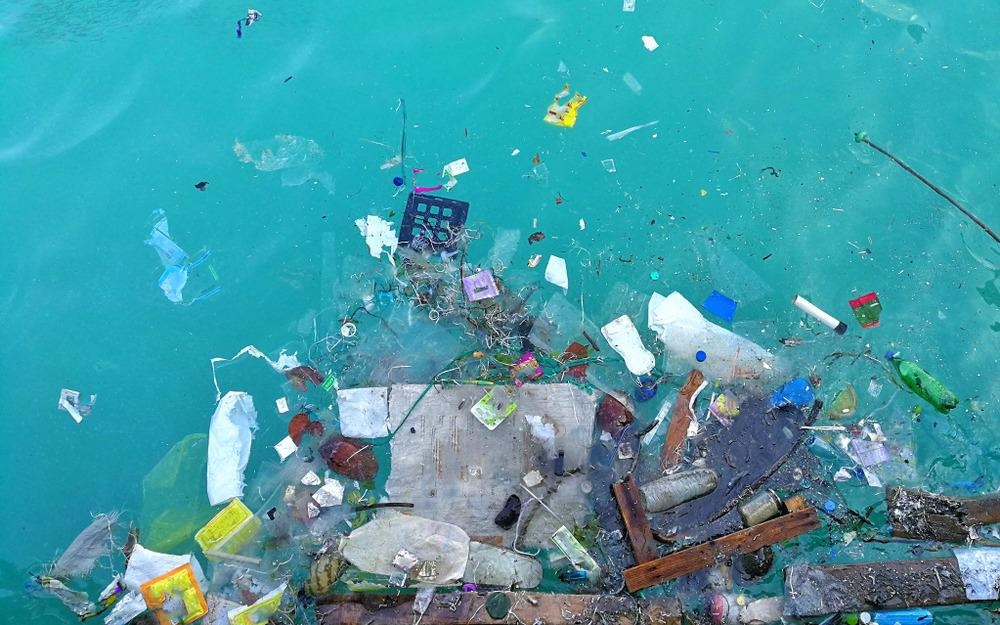The buildup of non-biodegradable microplastics (MPs) in water habitats as a consequence of modern industry's vast manufacturing and plastic use has led to significant pollution concerns worldwide.

Study: Holey Ti3C2 nanosheets based membranes for efficient separation and removal of microplastics from water. Image Credit: Mr.anaked/Shutterstock.com
A recent study available as a pre-proof in the Journal of Colloid and Interface Science describes the development of holey titanium carbide (Ti3C2Tx) nanosheets for effective MPs wastewater treatments by dissolving cobalt oxide (Co3O4) nanocrystals followed by quick vacuum filtering utilizing polymeric membranes. Due to the biophysical durability, enormous water flows, and excellent MPs extraction efficiency of h-Ti3C2Tx films, there may be substantial scope for real-world applications in the isolation and treatment of different pollutants from water.
Harmful Effects of Plastic Pollution
By 2050, it is anticipated that 12 billion tons of plastic waste will have accumulated in landfills, with contamination of ecological systems likely. Additionally, discarded plastic accounts for a significant amount of the fuel delivered to trash incinerators, a source of carbon pollutants.
Around the globe, enormous volumes of plastic trash are dumped into the ecosystem, contributing to the present crisis of white pollution. Additionally, since plastics are difficult to degrade organically, poorly dumped plastics end up in the sea, where they amass over time through trash ashore, runoff from sewage treatment, streams, and wind currents.
Plastics accumulating in the ecosystem can eventually degrade into microplastics and even nanoplastics.
What are Micro and Nanoplastics?
Microplastics (MPs) are described as synthetic fiber particles that are less than 5 mm in diameter, which are mostly formed as a result of the degradation of bigger plastics.
Nanoplastics have garnered extensive academic interest as a new contaminant owing to their reduced particle size and capacity to infiltrate cell walls, collect in body tissues despite biological membranes, and impact organisms' behavior and biochemistry. Additionally, nanoplastics have the potential to secrete and aggregate organic contaminants and toxic metals in the water habitats, transferring them to other ecosystems through the food web and long-distance transmission, presenting a risk to the environment.
These micro-and nanoplastics may be transported up the food chain to creatures at various trophic levels, where they can have a detrimental influence on human health.
The main source of micro/nano plastics is excessive discharge from micro/nano plastic items. Secondary sources include ultraviolet (UV) irradiation, corrosive environment, and bacterial fermentation of bigger plastic particles in the ecosystem.
Over the past few years, there has been an increasing concern and understanding about the ecological crisis posed by plastics, particularly microplastics and nanoplastics.
Titanium Carbide Membranes for Removal of MPs from Wastewater
MXene made of titanium carbide (Ti3C2Tx) has been receiving significant interest as a new two-dimensional material since it was identified in 2011.
MXenes show a remarkable mix of features due to their unusual surface morphology and chemistry, including electrical conductance, a hydrophilic interface, and high mechanical resilience. These exceptional qualities set MXenes apart from other two-dimensional materials and make them attractive options for power storage, batteries, membrane filtration, organic synthesis, electromagnetic interference filtering, and superconductors.
MXenes have been shown to have superior antimicrobial capabilities, a hydrophilic coating, and heat resistance, making them ideal for barrier applications in water purification.
In this study, the researchers developed a new nanosheet premised on holey Ti3C2Tx nanosheets (h-Ti3C2Tx) for effective MPs extraction in wastewater by dissolving the Co3O4 nanocrystals followed by convenient vacuum filtering. The h-Ti3C2Tx membrane's distinctive microporous shape not only nanosheets and captures polymers on a nano- to micro-scale, but also enables rapid mass transfer with good water flow.
Research Findings and Conclusion
The team developed the first specimen of a new nanosheet composed of h-Ti3C2Tx nanosheets capable of successfully capturing and removing MPs from wastewater. Due to the enormous number of holes on the nanosheets, the produced h-Ti3C2Tx membranes displayed an exceptional MPs removal effectiveness of up to 99.3 percent under the current testing circumstances using FP nanoparticles of various sizes as model MPs.
By combining the biophysical resilience of hTi3C2Tx membranes with their high-water flow effectiveness for MPs extraction, as well as their easy and flexible manufacturing process, h-Ti3C2Tx membranes may have a lot of practical uses in the discharge of MPs from water.
Reference
Yang, L. et al, (2022). Holey Ti3C2 nanosheets based membranes for efficient separation and removal of microplastics from water. Journal of Colloid and Interface Science. Available at: https://www.sciencedirect.com/science/article/abs/pii/S0021979722004386
Disclaimer: The views expressed here are those of the author expressed in their private capacity and do not necessarily represent the views of AZoM.com Limited T/A AZoNetwork the owner and operator of this website. This disclaimer forms part of the Terms and conditions of use of this website.